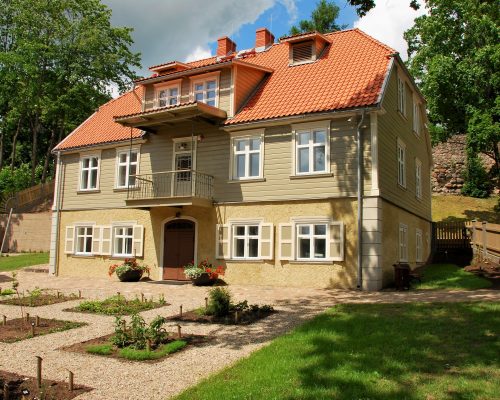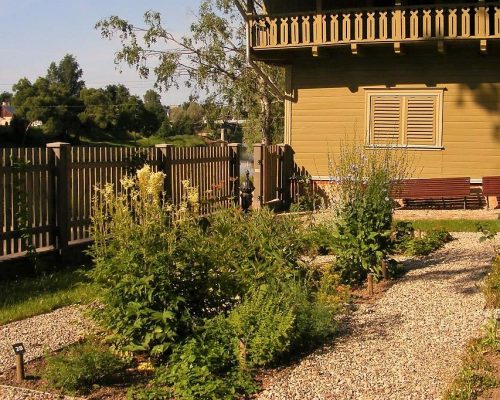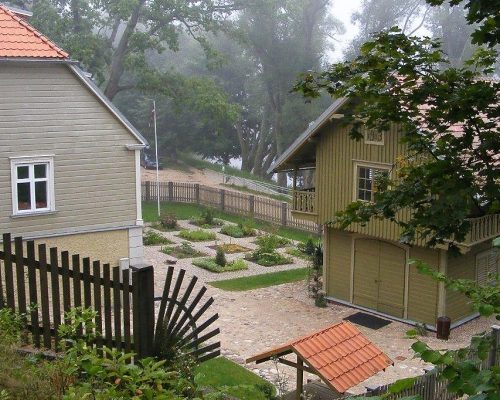Valmiera Museum Medicinal and Herbal Garden
Garden of Valmiera Museum. 12 square planting beds. Herbs and medicinal plants. Tastings. Stories of knowledgeable museum staff. Open for visitors 24/7.
The planting beds of medical plants and herbs in the courtyard of the Valmiera Museum are dedicated to pleasure, health and beauty. This threesome goes hand in hand in smart living. In older days, dishes were enriched with local plants – garlic, yarrow, cumin, mustard, horseradish and others. During the Hanseatic League times, thyme, oregano, rosemary, hyssop, sage and basil was brought here for good – there are about 150 different plants in the planting beds, but most of them are characteristic to Latvia. Despite the cold winters, grape grow here.
During the Museum’s working hours, the Museum’s researchers will tell you a lot of interesting things – what was grown in the 18th century for the needs of a local pharmacy, which plants are safe to try for your own needs, which are poisonous, which are safely edible from early spring. How parsley wreaths were made for the Olympians, how patricians used salad leaves to treat hangover, what herbal infusions help with heartache, relax, cheer up, soothe inflammation, and which teas can safely be consumed every day. How to use cornflowers, orange calendula and the durable sedum for food, to which mushroom dishes should yarrow be added. What to harvest in the wild, but what can be grown in the backyard garden, on the balcony or even on the windowsill.
Perhaps, the modern urban human has no idea what a blooming cumin looks like, what kind of leaves the horseradish root has or what a lovage looks like, which used to be planted around the house as protection from plague. You can find out all the answers in the 12 square-meter wide herbs garden of Valmiera Museum. Plants need to be caressed and smelled. If you touch a rosemary shrub, the smell stays on your hands for three more hours! It is better to come here from spring to autumn when everything is green and blooming. Visitors are welcome and the gates are open 24 hours a day. However, in winter, if booked in advance, the Museum offers workshops on usage of plants and lectures with tea and herb tastings.
















